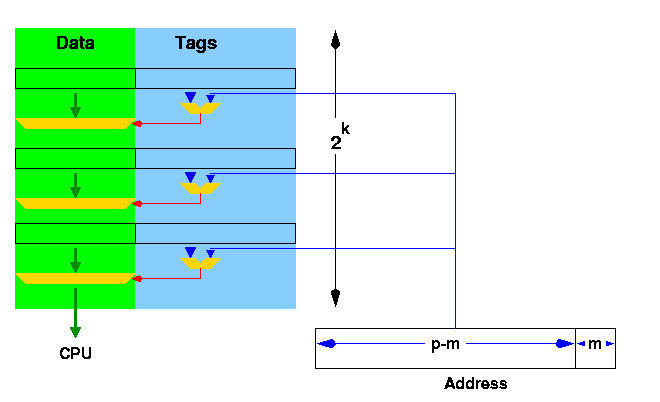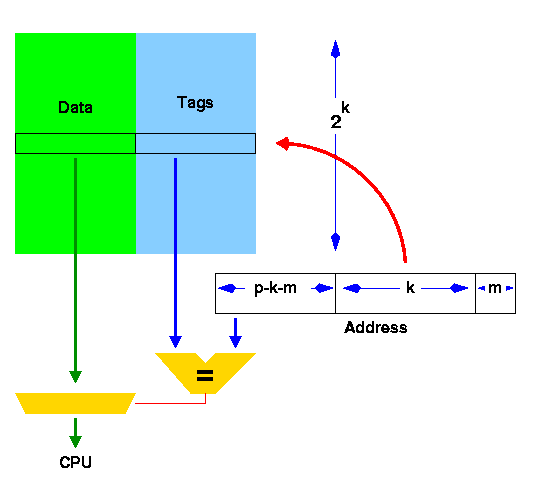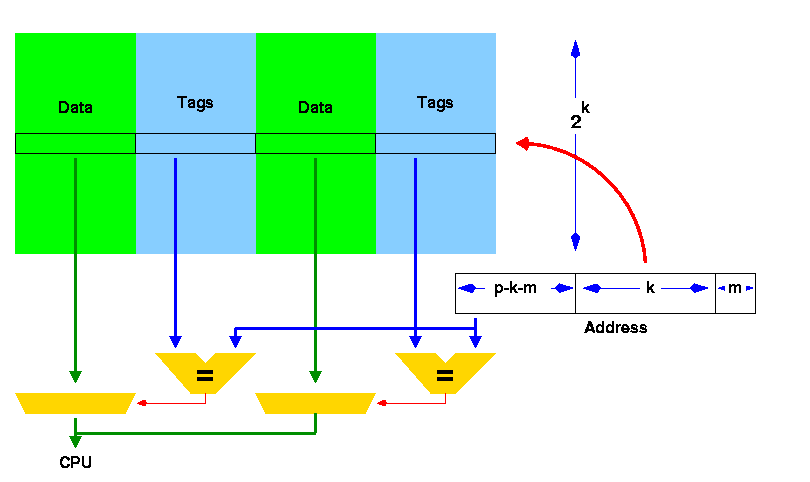
The goal of an effective memory system is that the effective access time that the processor sees is very close to to, the access time of the cache. Most accesses that the processor makes to the cache are contained within this level. The achievement of this goal depends on many factors: the architecture of the processor, the behavioral properties of the programs being executed, and the size and organization of the cache. Caches work on the basis of the locality of program behavior. There are three principles involved:
Processor reference that are found in the cache are called cache hits. References not found in the cache are called cache misses. On a cache miss, the cache control mechanism must fetch the missing data from memory and place it in the cache. Usually the cache fetches a spatial locality called the line from memory. The physical word is the basic unit of access in the memory.
The processor-cache interface can be characterized by a number of parameters. Those that directly affect processor performance include:
Within the cache, there are three basic types of organization:
In fully associative mapping, when a request is made to the cahce, the requested address is compared in a directory against all entries in the directory. If the requested address is found (a directory hit), the corresponding location in the cache is fetched and returned to the processor; otherwise, a miss occurs.

In a direct mapped cache, lower order line address bits are used to access the directory. Since multiple line addresses map into the same location in the cache directory, the upper line address bits (tag bits) must be compared with the directory address to ensure a hit. If a comparison is not valid, the result is a cache miss, or simply a miss.
The address given to the cache by the processor actually is subdivided into several pieces, each of which has a different role in accessing data.

The set associative cache operates in a fashion somewhat similar to the direct-mapped cache. Bits from the line address are used to address a cache directory. However, now there are multiple choices: two, four, or more complete line addresses may be present in the directory. Each of these line addresses corresponds to a location in a sub-cache. The collection of these sub-caches forms the total cache array. In a set associative cache, as in the direct-maped cache, all of these sub-arrays can be accessed simultaneously, together with the cache directory. If any of the entries in the cache directory match the reference address, and there is a hit, the particular sub-cache array is selected and outgated back to the processor.

A number of tools have been included as part of this web-based Cache tutorial. They are: